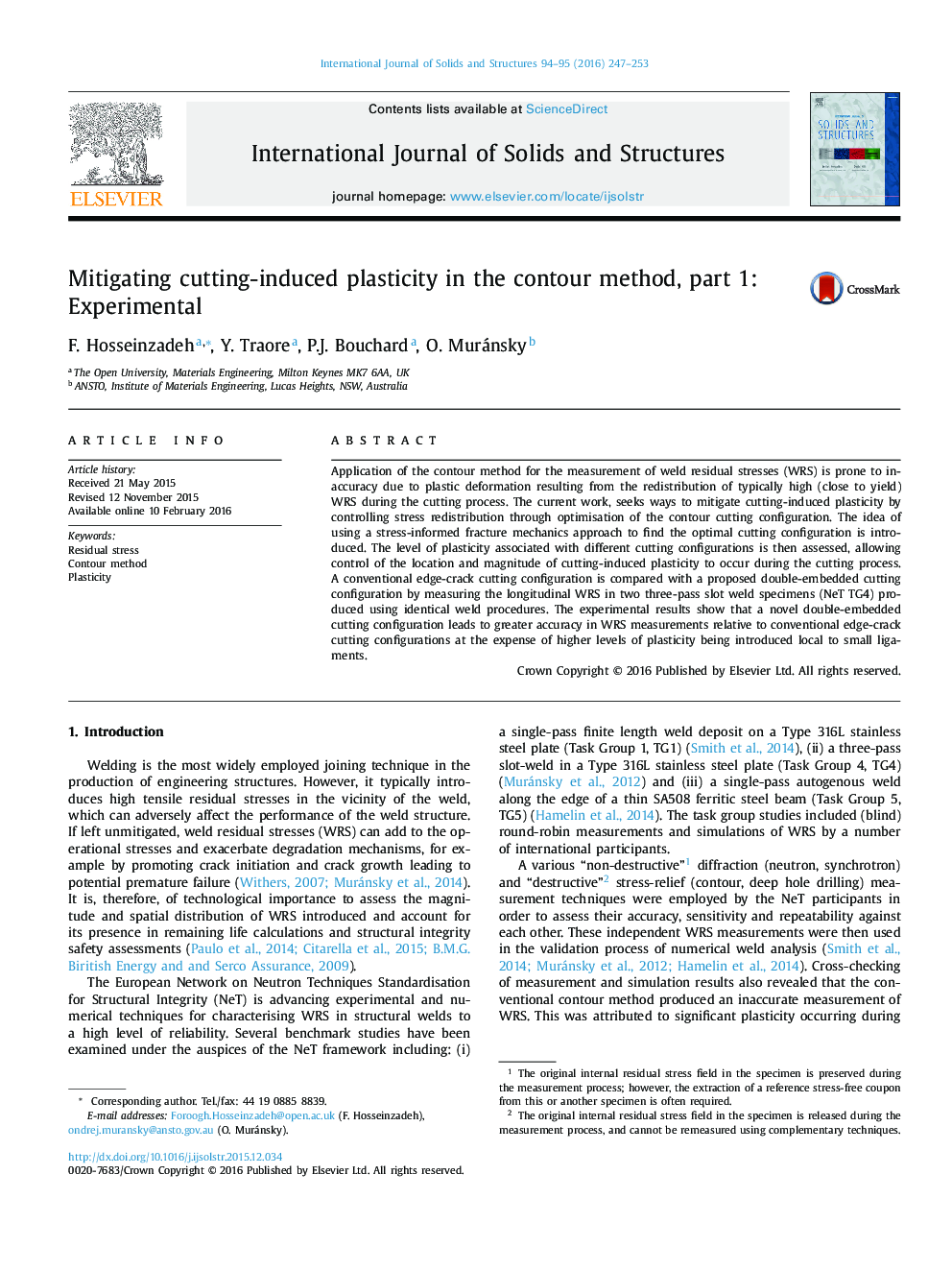| Article ID | Journal | Published Year | Pages | File Type |
|---|---|---|---|---|
| 277122 | International Journal of Solids and Structures | 2016 | 7 Pages |
Application of the contour method for the measurement of weld residual stresses (WRS) is prone to inaccuracy due to plastic deformation resulting from the redistribution of typically high (close to yield) WRS during the cutting process. The current work, seeks ways to mitigate cutting-induced plasticity by controlling stress redistribution through optimisation of the contour cutting configuration. The idea of using a stress-informed fracture mechanics approach to find the optimal cutting configuration is introduced. The level of plasticity associated with different cutting configurations is then assessed, allowing control of the location and magnitude of cutting-induced plasticity to occur during the cutting process. A conventional edge-crack cutting configuration is compared with a proposed double-embedded cutting configuration by measuring the longitudinal WRS in two three-pass slot weld specimens (NeT TG4) produced using identical weld procedures. The experimental results show that a novel double-embedded cutting configuration leads to greater accuracy in WRS measurements relative to conventional edge-crack cutting configurations at the expense of higher levels of plasticity being introduced local to small ligaments.
